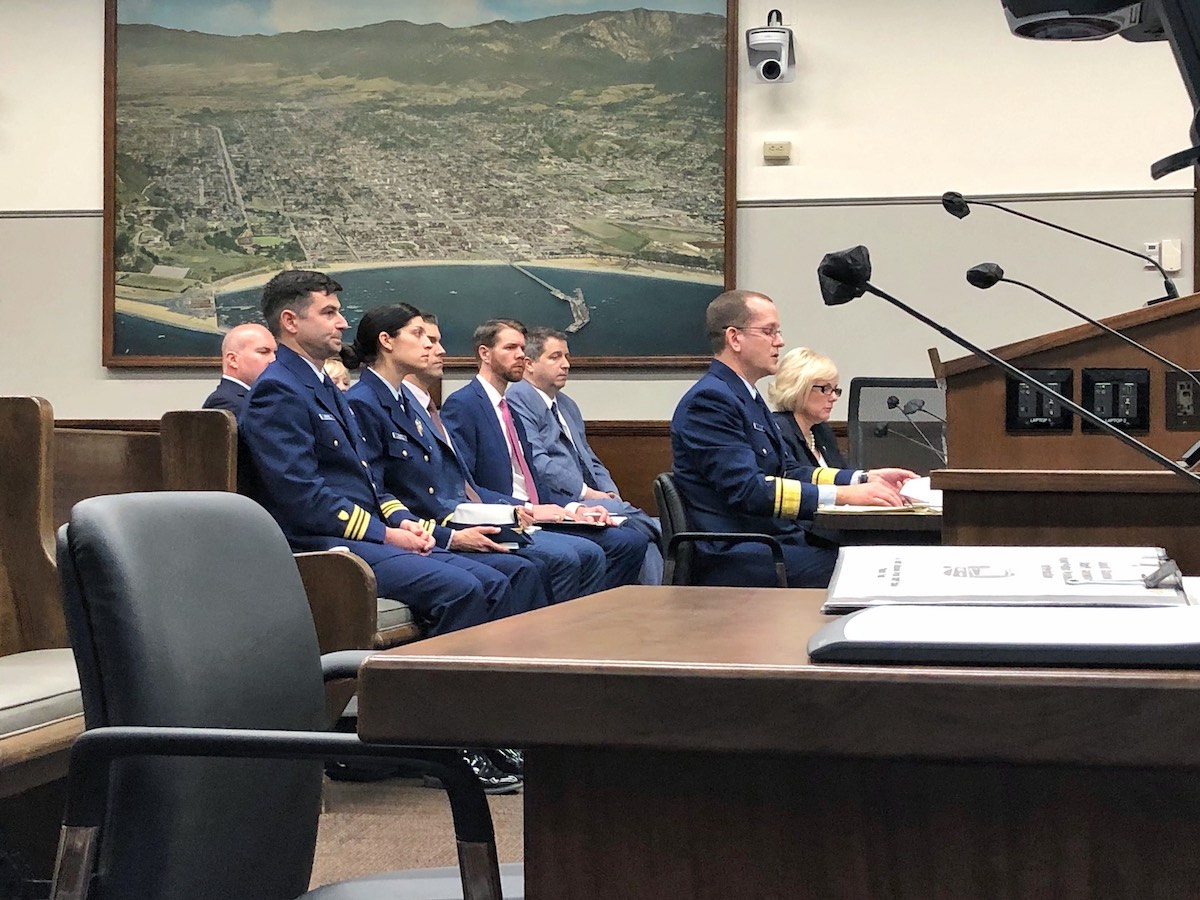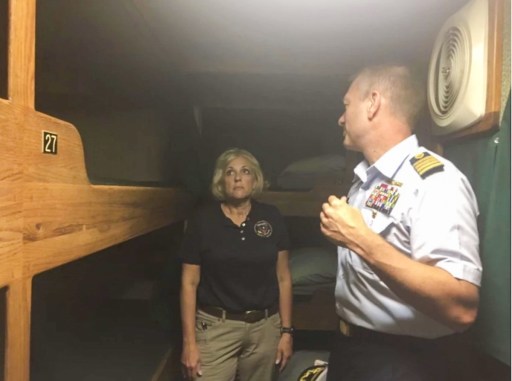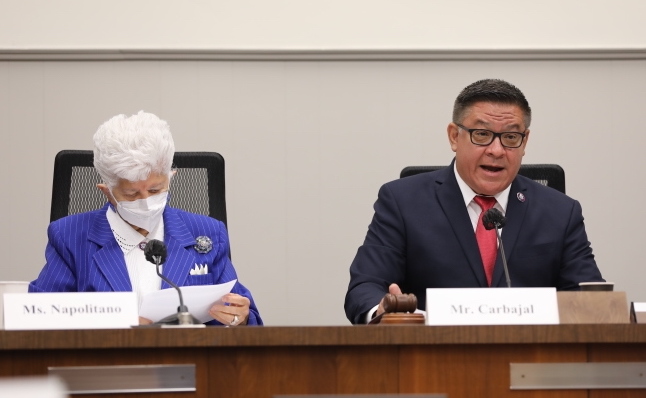‘Conception’ Field Hearing at Santa Barbara City Hall
New Small Passenger Vessel Rules Take Effect March 28

The design of the Conception passenger ship was one of many factors that led to the deaths of 34 people on September 2, 2019, who were trapped belowdecks when a fire quickly spread through the galley area on the main deck. At a congressional hearing on Monday, National Transportation Safety Board chair Jennifer Homendy said she would never allow her family to overnight on a similar vessel, knowing what she knows now about the Conception‘s stairs and escape hatch.
Homendy made her statement in answer to a question from Congressmember Salud Carbajal, who convened Monday’s hearing at Santa Barbara City Hall. He chairs the House Coast Guard and Maritime Transportation subcommittee and moved the hearing to Santa Barbara to enable family members of the victims to attend. The three uniformed Coast Guard members attending the hearing somberly shook hands with the six family members present, expressing their condolences for the lives lost.
Homendy had reviewed the Conception’s sister ship, Vision, at its berth in Santa Barbara Harbor during the NTSB’s investigation. Steep stairs led to the bunk room, and a small escape hatch above a triple bunkbed led to the center of the galley’s salon. A requirement that escape hatches be usable and exit to an area different from the main entryway’s is among the new regulations that go into effect on March 28.

It shouldn’t take an act of Congress to achieve new maritime regulations, Homendy said, referring to some 20-year-old recommendations her agency had made to the Coast Guard, which is in charge of maritime rule-making. In this instance, Carbajal, Representative Julia Brownley, and Senator Dianne Feinstein had sponsored a bill in 2019 directing the Coast Guard to quickly make rules addressing the Conception’s inadequacies.
In addition to an effective escape hatch, all small passenger vessels regardless of age must implement fire suppression, alarms, and training; night watch verification; containers for flammable equipment; and better verification of inspections. A bank of batteries recharging on power strips are widely believed to have sparked the fire — though the NTSB made no absolute finding on the fire’s cause — in a galley with no interconnected fire detectors. A crew member cleaning up late in the galley had gone to bed on the upper deck, only to be awakened within 30 minutes by the sound of fire. No one in the bunkroom belowdecks survived, and the ship burned to the waterline before sinking. A night watch to raise the alarm had not been set by the captain, Jerry Boylan, who faces criminal charges of seaman’s manslaughter.
In response to the catastrophic fire, the Coast Guard’s most experienced inspectors had checked ships at the greatest risk all last summer, said Rear Admiral John Mauger. And they’d added 126 people to the inspection program, 87 of whom are already in the field. Their marine safety plan opened the door to training, mentors, and apprenticeships in inspection to enlisted ranks, an early career opportunity that was received with enthusiasm, he said.
Sign up for Indy Today to receive fresh news from Independent.com, in your inbox, every morning.
As for the speed with which the Coast Guard set rules, Mauger explained that federal regulations require public comment on proposed rules — 134 had come in for the ones that take effect next Monday — and a cost-benefit analysis with vessel owners in mind. “Passenger vessels are very diverse,” he explained, as owners claimed costs from tens of thousands to half a million dollars for the safety changes. And, in accidents with criminal charges, his service holds the file open until the Department of Justice closes the case. But, as in the Conception safety rules, Congress could direct the Coast Guard to act otherwise, the admiral said.

Homendy noted that passenger vessels could implement the requirements voluntarily, as aviation has done. According to passengers, the Vision now has a fireproof chamber for charging batteries. Homendy’s report for the hearing reviewed a list of 93 maritime recommendations her agency had made in the past 20 years that were still “open” and had not made it into law. They run the gamut from offshore oil platform safety to icing on crab pots to training and communications. Thirteen are on the NTSB’s “most wanted list,” and include why the Stretch Duck 7 sank — a WWII-era amphibious vehicle, designated DUKW, that sank in Table Rock Lake, Missouri, in 2018, killing 17 of the 31 people aboard — personal locator beacons for mariners, and Voyage Data Recorders.
The Voyage Data Recorder — which is required on international ships but not domestic ones — is like an aircraft’s “black box,” Homendy explained. While Mauger temporized that information like coordinates or speed could be obtained from cellphone-like devices, Homendy argued that a “black box” device for boats was critical for investigators and the companies that owned the craft. With a black box, information came out quickly, followed by safety improvements that “saved lives and prevent tragedy.”
As far as responsibility for the disaster, the 1851 limitation of liability law that shields shipowners may soon be a thing of the past, Carbajal said; it limits payouts to the value of the vessel, which, in the case of the Conception, is zero. A bill he and Sen. Feinstein authored should sunset that law in the next defense authorization act, be retroactive to the Conception, and enable survivors to “hold responsible parties accountable,” he said.
Support the Santa Barbara Independent through a long-term or a single contribution.




You must be logged in to post a comment.